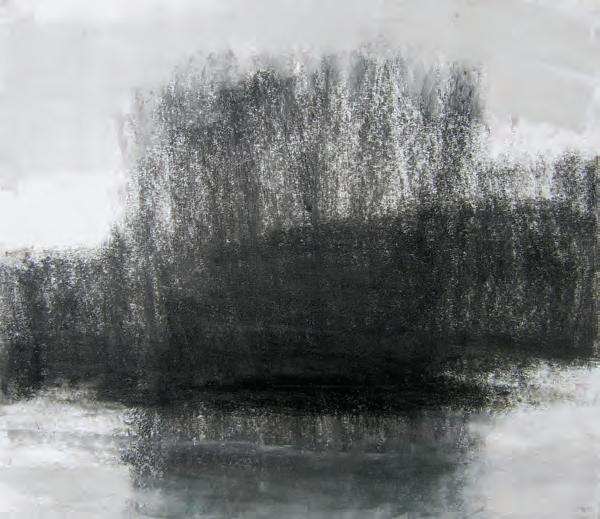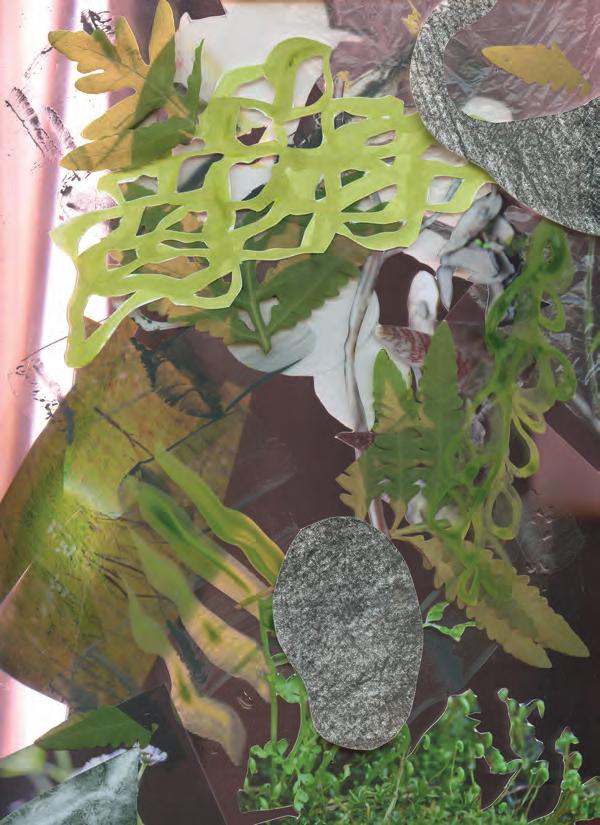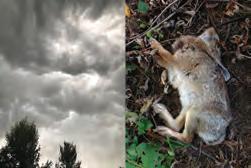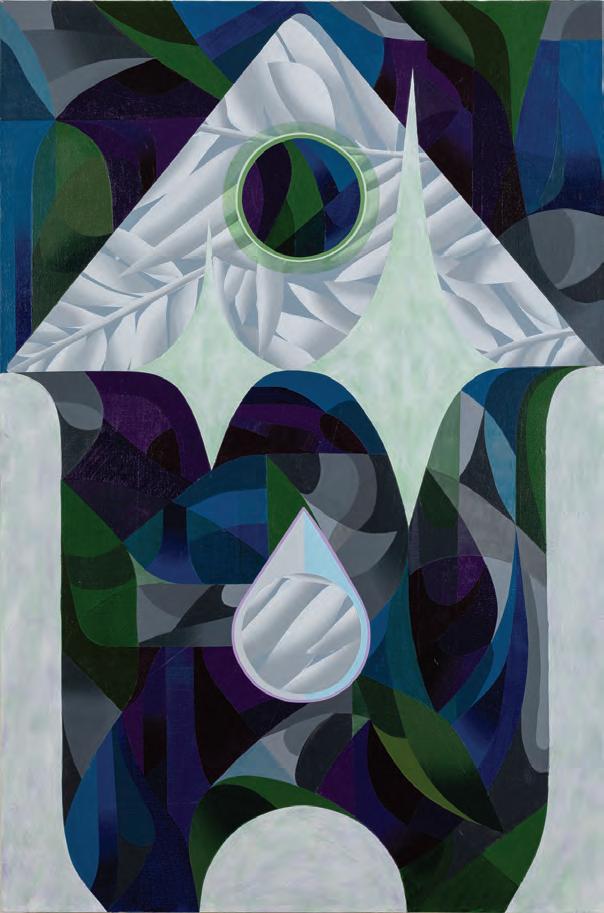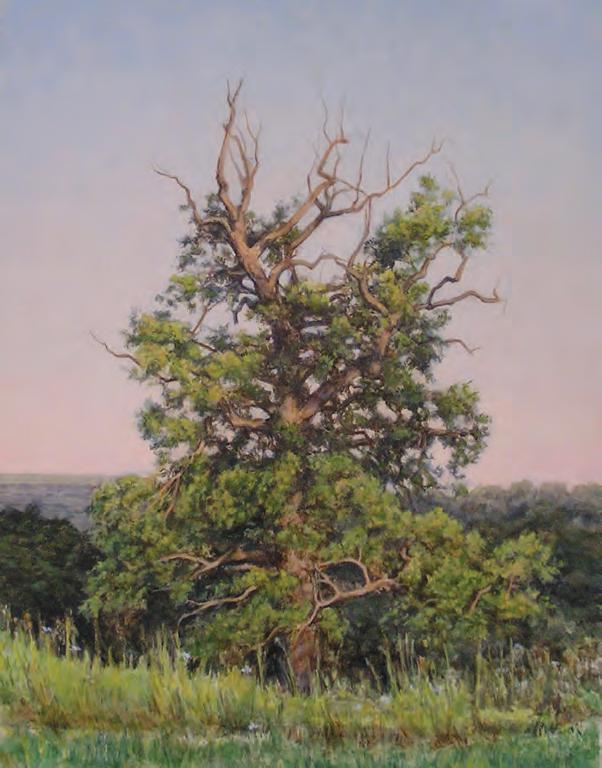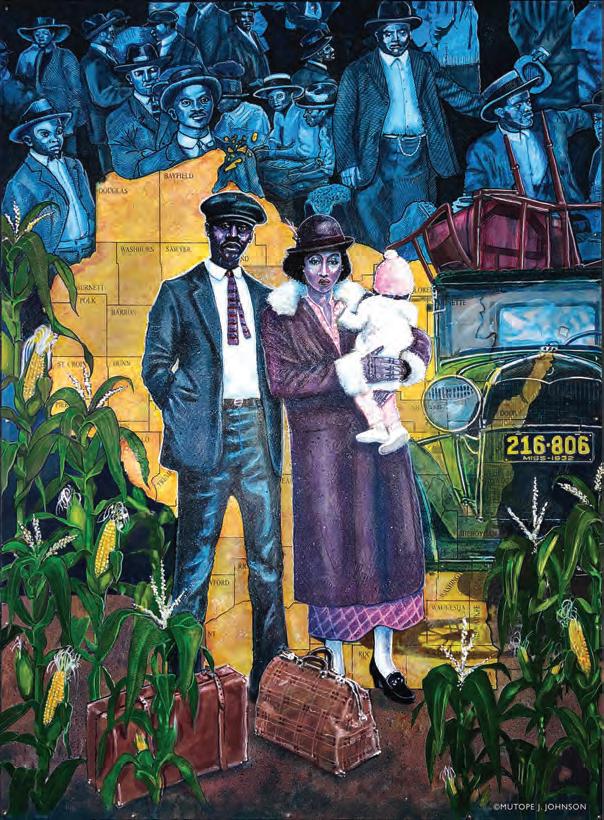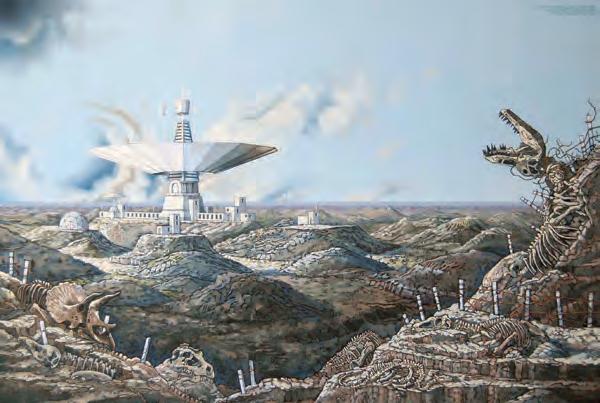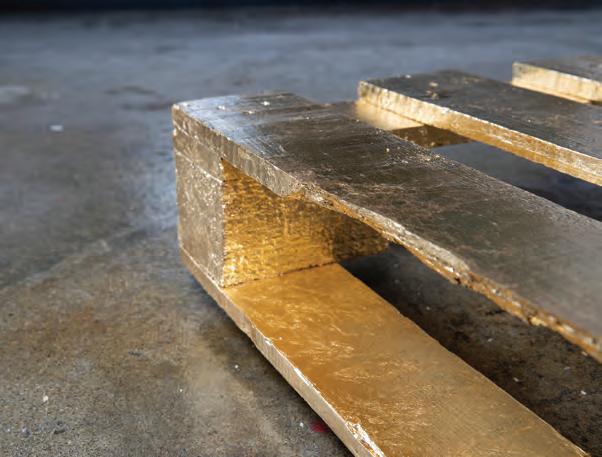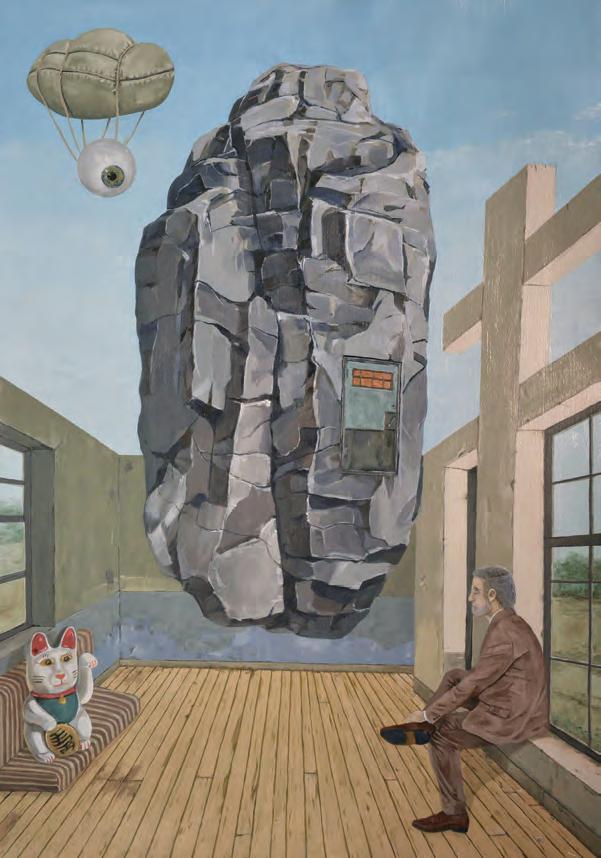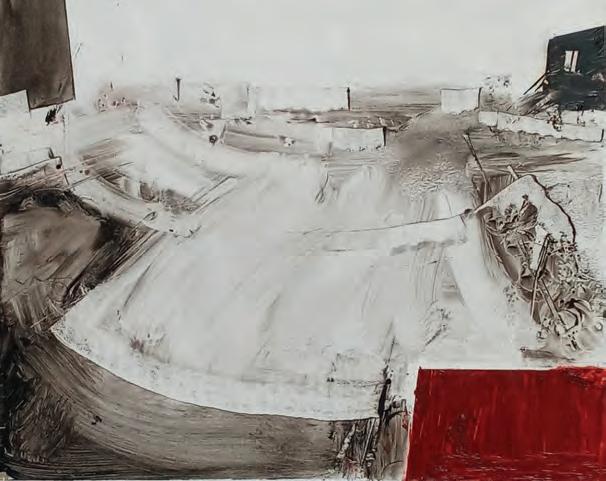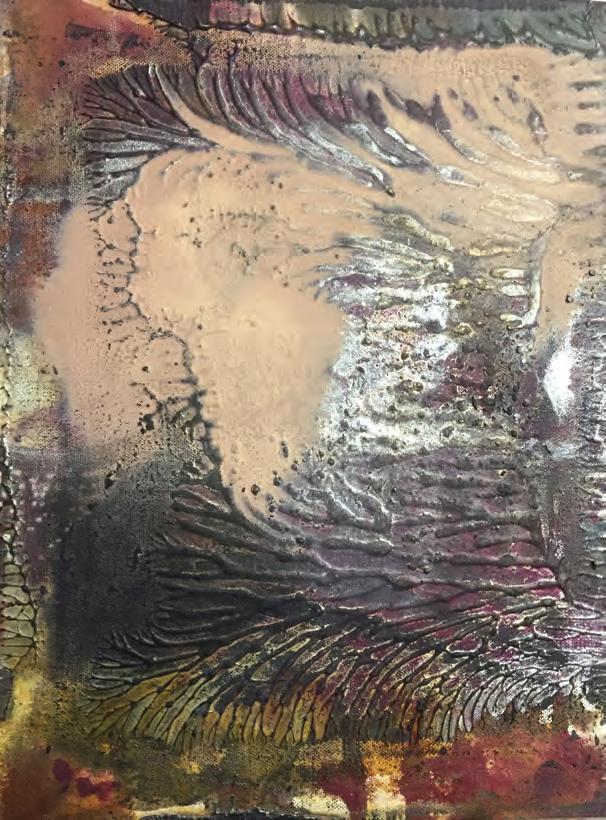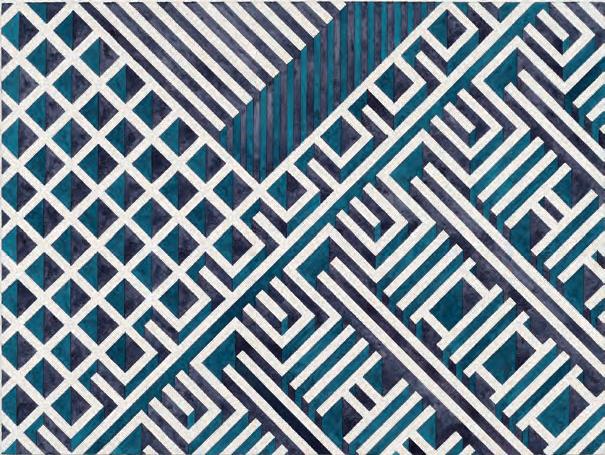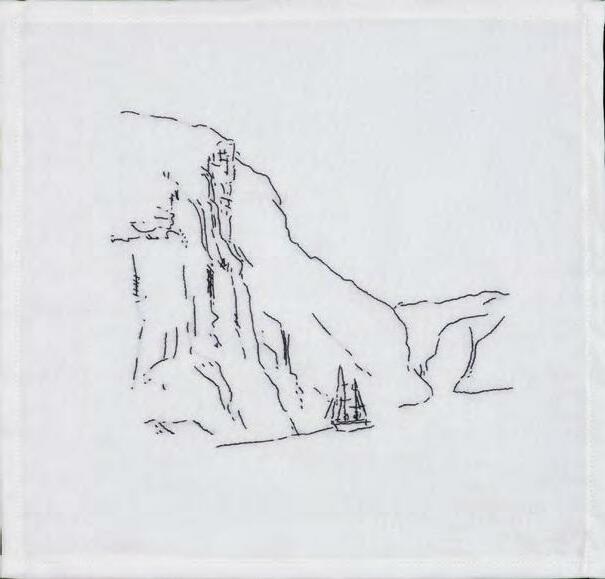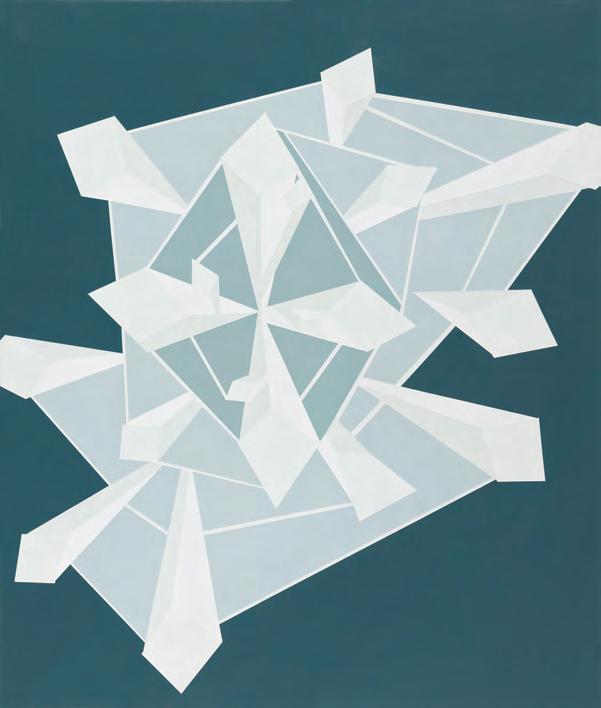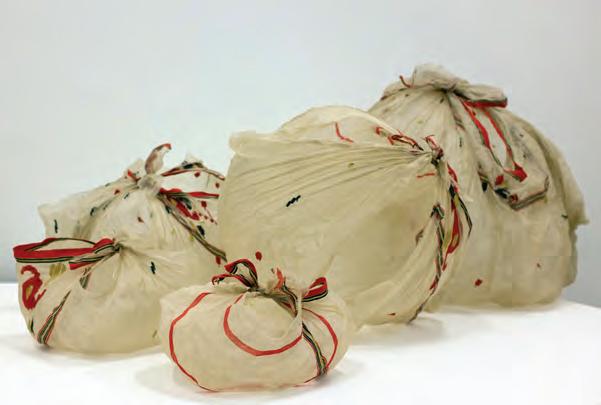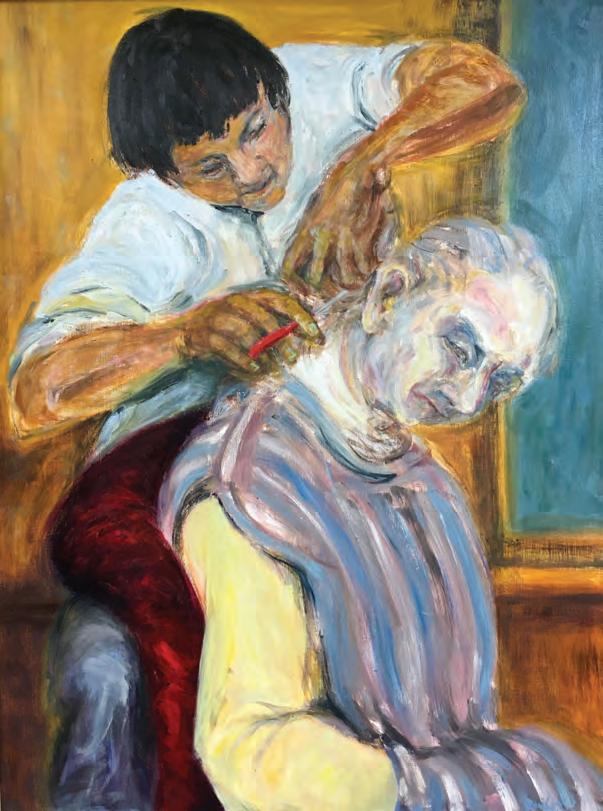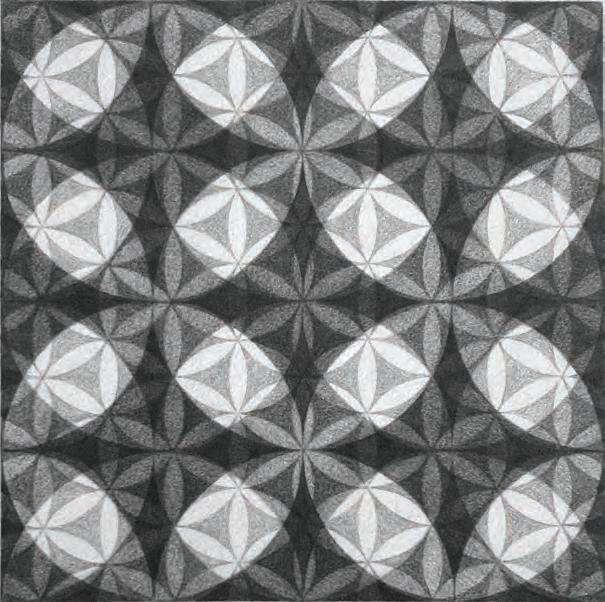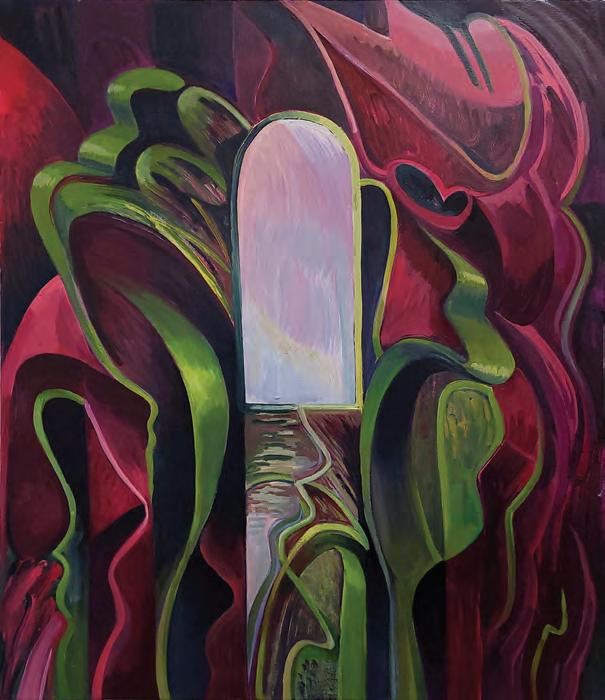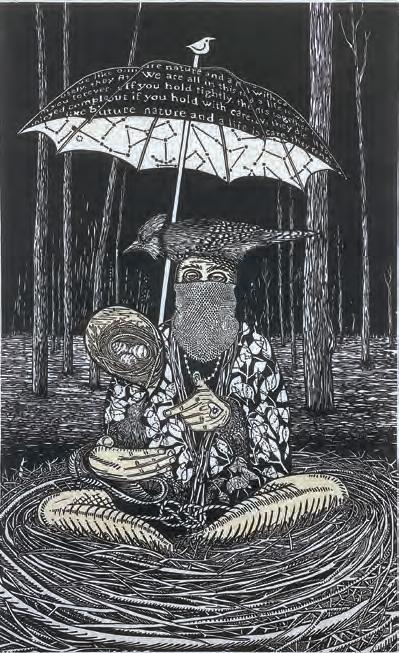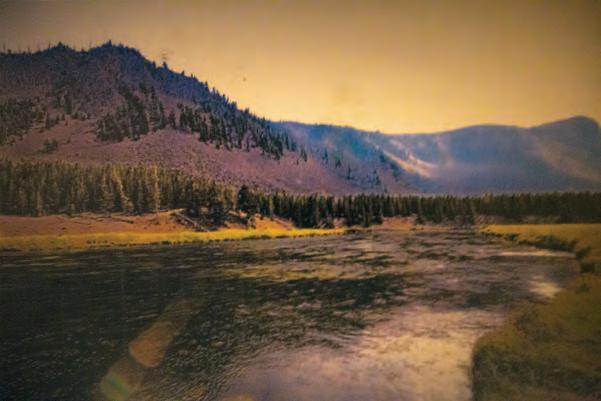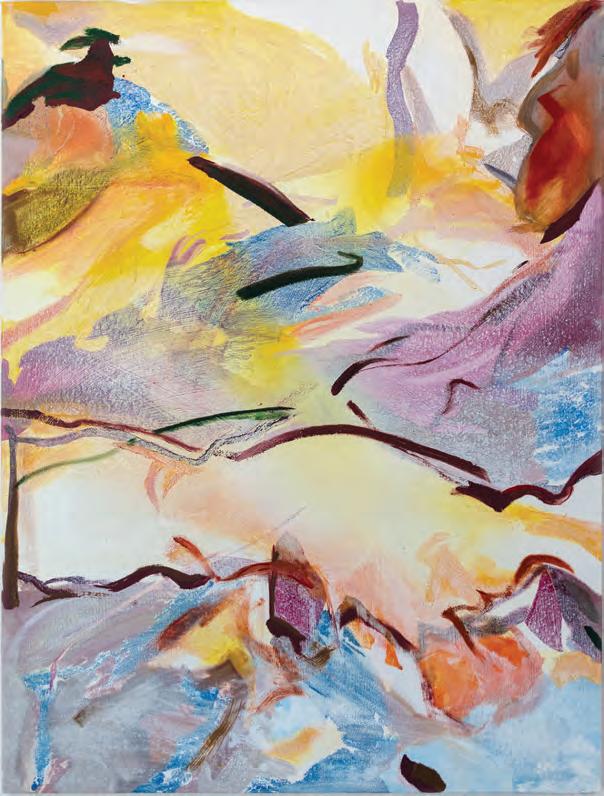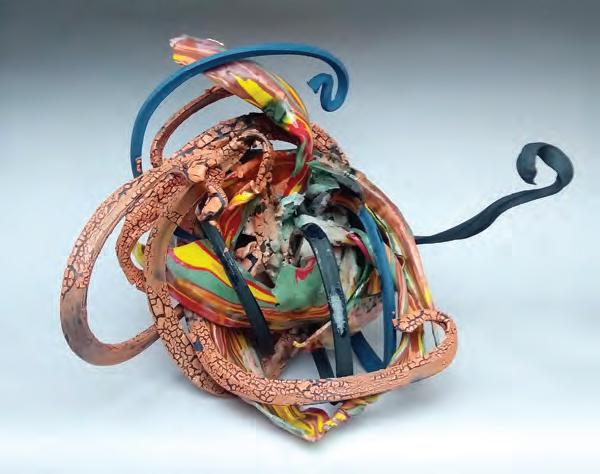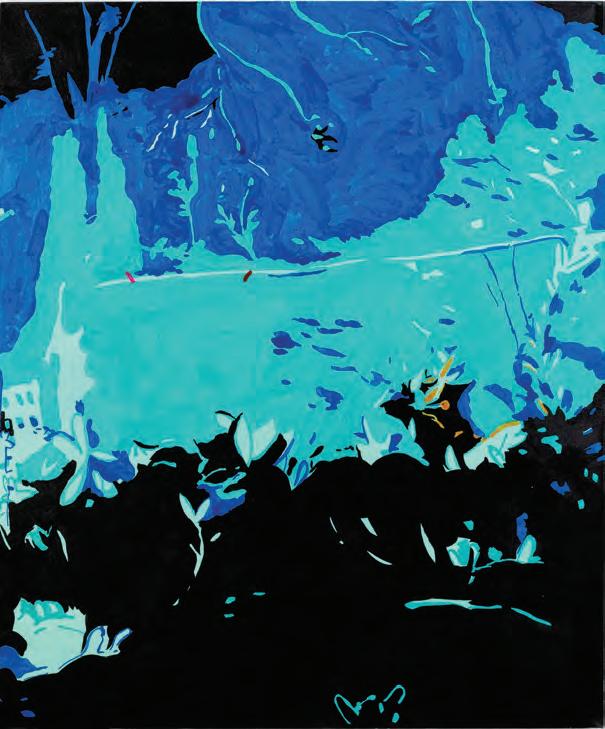

Professor Emerita Leslie Vansen alongside 51 Alumni
September 7 - 22, 2022
Kenilworth Square East Gallery University of Wisconsin-Milwaukee
Bjorn Akerblom William Andersen Melanie Ariens Liz Bachhuber James Barany Steve Burnham Allison B. Cooke Michael Davidson Josiah Ellner John Fatica Leslie Fedorchuk Brian Felten Mariah Ferrari Nina Ghanbarzadeh Kevin Giese
Regan Golden Matthew Groshek
Kristin Haas Sean Heiser Kathy Hofmann Ariana Huggett Marc Jacobson Hai-Chi Jihn Mutòpe J. Johnson Nykoli Koslow Alyssa Krause Matthew Lee Rebekah Linner kathryn e. martin-meurer Edmund Mathews Tyler Meuninck Maggie Michael A. Bill Miller Nick Naber
Chris Niver Amy O’Neill Melanie Pankau Keith Pitts Deidre Prosen Nirmal Raja Barbara Reinhart Paula Schulze Joe Steiner Brennen Steines
Adam Stoner Christine Style Corbett Toomsen Emily Tripp Michael Ware Sonji Yarbrough Hunt Jenna Youngwood
Acknowledgments
It is an honor to present selected works from my career at UWM. I am grateful to the Art and Design Executive Committee for their generous encouragement to show this work. Special thanks go to Kyoung Ae Cho for her months of thorough assistance with all aspects of planning and designing the exhibition. My faculty and staff colleagues have been generous in their support throughout my teaching years. I have had the good fortunate to work with hundreds of students at UWM and have fully enjoyed their challenges and successes. They always gave me much more than I was ever able to offer them. The group of alumni artists showing their work here along with me represents that history of exciting former students.
I am indebted to Michael Lagerman’s work to photograph those paintings in the exhibition that predated digital photography. He, Brian Felten, and Adam Hawk spent hours moving my paintings between studio spaces, photo shoot sites and the gallery. Robert Grame’s thoughtful work with the catalog design provides important continuity between the exhibition itself and the longer term involvement with the work that the documentation makes possible.
Finally, the support of my family has been essential to my entire studio production career as represented by this exhibition. My husband’s enthusiastic interest in my studio practice knew no bounds. He has been unfailingly supportive, insightful and challenging. Our long years of productive partnership and eager dialog are at the heart of this exhibition.
CREDITS
Peck School of the Arts Kevin Hartman, Interim Dean
Peck School of the Arts Ana Conant, Development Director
Department of Art and Design Kim Cosier, Co-Chair Jessica Mueninck-Ganger, Co-Chair
John Colt Memorial Fund
Exhibition Coordinator Kyoung Ae Cho, Professor of Fibers
Exhibition File Management Shelby Desantis, Visual Arts Programs Assistant
Catalog Design
Robert Grame, Associate Professor of Design and Visual Communication
Gallery Preparation Mischa Premeau, Facilities & Operations
Forward
We are honored to introduce Continuum 2022: Sitelines 42. Through this exhibition we bear witness to the profound effects Professor Emeritus Leslie Vansen’s forty-two years of artistic research and teaching have had at UWM. Having started her career here in 1978, Vansen blazed trails for many of us who have endeavored to follow in her footsteps. Her mentorship has been of incalculable value to her colleagues as well as to the hundreds of undergraduate and graduate students with whom she has worked.
Like the selection of artists’ works in the exhibition space, the depth and range of Vansen’s individual paintings capture a remarkable accumulation of experiences and memories. Vansen describes her process as, “cyclical events which shape space, control form and encourage or inhibit change are evoked metaphorically through methodical applications of paint which conceal and reveal their layered identities.” Her process is intentional and emerges from a confident hand. Her paintings yield surfaces, colors, and paths that vacillate, shift through time and space, and both simultaneously guide and disorient. Vansen’s work is an invitation to experience overlapping layers of ideas and novel explorations of physical and social environments. Her wonderfully varied and captivating modes of mark making leave significant, lasting impressions.
Vansen is an incredibly productive and accomplished artist who has exhibited extensively over the course of her career; her work is in numerous public and private collections. Thirty of her own pieces are exhibited here beside the work of fifty-one of her former students. The confines of space forced Vansen to limit the number of alumni who could be included though it is her intention that this show be a celebration of all of her former students. The exhibition is evidence that Leslie Vansen has left an indelible mark on the artistic community in Milwaukee and beyond.
Kim Cosier and Jessica Meuninck-Ganger Co-Chairs, Department of Art and Design
Photo credit: Michael Lagerman “The dynamic limbo and inherent contradictions within order, chaos and inexorable outcome give the work its associations with nature and the familiarity of social interactions.”Leslie Vansen Artist Statement
The images in my paintings are literally, concretely “constructed” from obvious “abstract” components of visual forms - surface, lines, color, space. These embody a repetitive continuum of memory and association with nature and architecture as experienced daily in an urban context. No reference to one place or moment is intended; cumulative sensations of existence become visual force fields and remembered repetitive interactions. Cyclical events which shape space, control form and encourage or inhibit change are evoked metaphorically through methodical applications of paint which conceal and reveal their layered identities. The paintings’ scale corresponds to my own physical presence in space; their surfaces report the actions of my body. The paintings are chaotic meanderings intersected by imposed structural grids. The juxtaposition of meander and structure generates “time,” postpones solution and avoids hierarchy. The dynamic limbo and inherent contradictions within order, chaos and inexorable outcome give the work its associations with nature and the familiarity of social interactions. Where expression is possible here, it is accessible via analogy, metaphor, tactile presence, and viewer confrontation.
Every procedural tactile step taken in the construction of the paintings is made insistently visible, recording the “work” that has made the existence of the finished painting possible. At the same time, the logic of that visible process is “hidden in plain sight” in the final image. Duration and methodology consume themselves to disappear into the history of their own making and become something else, obvious, unavoidable and quite different from the original intentions.
Looking back to 1978 to rediscover where the current body of my studio work has traveled over its more than 40 years has been an enlightening experience. A slow evolution and many continuities became immediately apparent.
An obvious language of forms emerged early in the 1980’s and developed gradually. That language of forms started with small black and white drawings using reconstructed observed figures and an intentional juxtaposition between organic and geometric conditions. Along with the drawings, words like revisit, reiterate, reconstruct, revise, and respond became central to the thinking and actions that produced those paintings.
Observed subjects, especially in movement, established the core of my vocabulary of forms and painting actions. These subjects are translated into linear overlay and embedded in source drawings as image layouts against which the drawn restructuring becomes an armature of geometry and line. Photographs of ordinary objects and familiar people become linear renditions of themselves to take on new identities. The vitality of the source images informs the drawings but the subjects themselves – found figures, observed sculptures, mechanical objects - are not visible in the finished paintings even though their presence is at the beginning point of every work.
Over time, the role of the drawn components for each painting’s visual field shifted from primary “image” for each painting to “active participant,” functioning as an organic underlayment of shape and suggestive presence along with systematic perspectival elements and invented icons for motion. By now those source components are so layered through each other that their separate identities are absorbed in each new overall image.
The earliest paintings here, like Spumoni, foregrounded the interplay between the drawn linear restructuring of figurative subjects and the stained fields of color applied to enhance the visual tactility of the visible canvas texture while keeping all the drawing and painted areas clear and obvious. Painted lines, pencil lines and stained applications remain evident in the final results.
Then between 1979 and 1989, it is clear that methodical searches for new studio production strategies, formats, palette decisions, and source images occurred simulta neously. Full palette solutions like those in Grouse Drab were followed in the years going into the 1990’s by a sequence of palette challenges to narrow and then re-expand the hue decisions being made.
First, there was a shift to chromatic grays among the paintings during the late 1980’s. These, like Sitar, focus sometimes on an overall tonality of mid value “color” that avoids consistent depth readings in favor of fluctuations between in and out and back and forth movements. The grays flicker across color areas that are close in their levels of brightness and accomplish sensations of light. In other chromatic gray paintings, like Pronk, the stained and thrown forms appear as abstract “figures” even though specific references to subject matter are avoided. The chromatic gray paintings were followed by paintings employing palette dichotomies using tight limitations of black and white. Those dichotomies included an overt left and right open book kind of division, as in Estufa and Scusi. It’s clear looking back at the full sequence of explorations that this period of black and white palette restrictions proved essential to the work that followed.
A natural return to limited hue-based palettes to explore new constructed color application methods occurred between Seiche and Strictly Speaking as the paintings jump away from the black and white juxtapositions of the early 1990’s.
Along with the four decade search for a pictorial language focus for the images in each painting, there was at the same time, a push to explore the act of painting itself as a kind of character in the abstract narrative of the paintings. First, surfaces were stained to keep both the canvas texture and the pencil lines of the small source drawings visible. Then, surface solutions moved between restrained and delicate in the early stained pieces through a series of application decisions to turn those stains into images and gestural exaggerations of brushstrokes.
Finally, a shift in my studio research appears near the end of the 1980’s. Those investigations caused a lively internal dialog, sometimes a battle between the known minimalist models which formed such a vital part of my earliest graduate studies and the challenges to those models which accelerated internationally during the 1980’s. My own studio production retreated temporarily to drawing and to works on paper. The emphasis on the visibility of paint application and canvas surface qualities I had pursued earlier, shifted to the possibility of a narrative in the paint itself and in its labor. When I returned to work on canvas, the paint application emphasis had been transformed and slowed from the tactile elegance of the more minimal works into a layered, repetitive deconstruction of the painting process to merge line and color completely so that every part of every painting was built from long painted linear color strokes. The results produce a composite appearance from a distance, an emphasis on the labor of “constructing” an image from process up close, and an invitation to integrate the composite appearance and constructed color forms over and over again as a way of entering each painting to find interpretations for its image.
“Along with the four decade search for a pictorial language focus for the images in each painting, there was at the same time, a push to explore the act of painting itself as a kind of character in the abstract narrative of the paintings.”


The Mind’s Eye










Postscript, 1999 Acrylic on paper board 11” x 25” unframed
Photo credit: Alan Magayne-Roshak








Brae
2008
and graphite on paper board

Preface, 2008 Acrylic on paper board 11” x 25” unframed
Photo credit (if any). Alan Magayne-Roshak








EDUCATION
1970 Master of Fine Arts, Painting and Drawing, University of Colorado, Boulder, Colorado
1967 Bachelor of Arts, Art, Printmaking (emphasis) University of Iowa, Iowa City, Iowa
SOLO EXHIBITIONS
2020 “Beginning and Continuing,” The Alice Wilds Gallery, Milwaukee, Wisconsin
2013 “Systems for Abstraction,” James Watrous Gallery of Wisconsin Art, Overture Center, Madison, Wisconsin
2008 “Leslie Vansen: Dichotomies, Paintings 1992-2008” Wriston Art Center Galleries, Lawrence University, Appleton, Wisconsin
2003 “Leslie Vansen,” Recent Paintings, inova Gallery Three, University of Wisconsin-Milwaukee
2002 “Hidden in Plain Sight,” Wisconsin Academy of Science and Art, Madison, Wisconsin
“Follies, Fancies, and Fugues II,” Cedar Rapids Art Museum, Cedar Rapids, Iowa
1996 “Leslie Vansen,” University of Wisconsin-Center System, Waukesha County
“Follies, Fancies, and Fugues,” Cardinal Stritch College, Milwaukee, Wisconsin
1989 “Recent Paintings, Leslie Vansen,” Katie Gingrass Gallery, Milwaukee, Wisconsin
1985 “Inaugural Exhibition,” Layton Gallery, Milwaukee Institute of Art and Design, Milwaukee, Wisconsin
1983 Charles A. Wustum Museum of Art, Racine, Wisconsin Seuferer/Chosy Gallery, Madison, Wisconsin
1982 Friends Gallery, Minneapolis Institute of Art
1981 University of Wisconsin-Parkside, Kenosha, Wisconsin Waterloo Municipal Galleries, Waterloo, Iowa, (also 1970)
1980 Mount Mary College, Milwaukee, Wisconsin, One Person Exhibition
INVITATIONAL AND GROUP EXHIBITIONS
2017 “Surfacing,” University of Wisconsin Eau Claire, January/February
“Fifty Years of Watercolor Wisconsin, Racine Art Museum, Racine, Wisconsin
“Error as Architecture,” Jazz Gallery, Milwaukee, Wisconsin, group exhibition
“Interface: Meetings of Art and Technology,” Invitational Group Exhibition, Union Art Gallery, University of Wisconsin-Milwaukee
2013 Remarkable Women, Peltz Gallery, Milwaukee Wisconsin (1992-2013)
2012 Michelle Grabner: The Inova Survey, University of Wisconsin-Milwaukee, Inova Gallery
2011 “Peripheral Vision: Leslie Vansen and Charles Vansen Paintings,
1990 - Present,” Town Center Gallery, St. Johns by the Lake, Milwaukee, Wisconsin
2004 “A Decade of Art,” Wisconsin Academy Watrous Gallery of Wisconsin Art, Overture Center, Madison, Wisconsin
1999 Group Exhibition, Alverno College, Milwaukee, Wisconsin
“ Wisconsin Art Since 1990,” Milwaukee Art Museum
1992 Jan Cicero Gallery, Chicago, Illinois
“Remarkable Women,” Peltz Gallery, Milwaukee, Wisconsin (also 1993-2013)
1991 Jan Cicero Gallery, Chicago, Illinois, Two Person Exhibition
1990 Jan Cicero Gallery, Chicago, Illinois, Group Exhibition
1989 “ Wisconsin Perspective: 2 and 3 Dimensional Works,” Delaware Center for the Contemporary Arts, Wilmington, Delaware
Jan Cicero Gallery, Chicago, Illinois, Group Exhibition
Riveredge Gallery, Mishicot, Wisconsin, Group Exhibition
1988 “Abstract Painting in Wisconsin,” Madison Art Center, Madison, Wisconsin
New Art from Wisconsin, 333 West Wacker Drive, Chicago, Illinois
1987 “Four Schools of Milwaukee Painting”, Alverno College, Milwaukee, Wisconsin, Group Exhibition
“New Aspects of Abstraction”, Jan Cicero Gallery, Chicago, Illinois, Group Exhibition
1986 Jan Cicero Gallery, Chicago, Illinois, Group Exhibitions (also 1984 and 1985)
“Emerging Artists Showcase,” Sheila Nussbaum Gallery, Millburn, New Jersey
1984 “ Women Painters Today,” Rahr-West Museum, Manitowoc, Wisconsin
1981 Lawrence University, Appleton, Wisconsin, Group Exhibition
“Milwaukee 1981” and “Milwaukee 1980”, Seuferer/Chosy Gallery, Madison, Wisconsin, Group Exhibitions
1978 Greenfield Community College, Greenfield, Massachusetts, Two Person Exhibition
1977 “Print Exhibition,” Boston Visual Artists Union, Group Exhibition
1976 Gallery 33, Concord, New Hampshire, Two Person Exhibition
SELECTED JURIED EXHIBITIONS
2019 “ Watercolor Wisconsin,” Charles A. Wustum Museum, Racine, Wisconsin (also 1983, 1984, 1985, 1988, 1990, 1995, 1998, 1999, 2000, 2001, 2004, 2005, 2006, 2008, 2009, 2010, 2011, 2012 and 2017)
2017 “Accumulations,” Sharon Lynn Wilson Center, Two Person Exhibition w ith Nirmal Raja
2015 “ Wisconsin Painters and Sculptors Exhibition,” Milwaukee, Wisconsin (also 1987, 1993, 1999, 2001, 2007, 2009)
1995 “Beloit and Vicinity Exhibition,” Beloit, Wisconsin (also, April 1982 & 1993)
1985 Wisconsin/Minnesota Interface, Cudahy Gallery of Wisconsin Art, Milwaukee Art Museum, Milwaukee, Wisconsin and Minnesota Museum of Art, Minneapolis, Minnesota
“14th Annual Union League Exhibition,” Chicago, Illinois
1984 “ Wisconsin Directions IV,” Milwaukee Art Museum, Milwaukee Wisconsin
1980 “1980 Wisconsin Biennale,” Madison Art Center, Madison, Wisconsin
1978 “Regional Selections 1978,” Jaffe-Friede Gallery, Hopkins Center, Dartmouth College, Hanover, New Hampshire “Landscape Show,” Boston Visual Artists Union
1977 Berkshire Museum, Pittsfield, Massachusetts, (also 1976)
1976 “Patrons Choice Exhibition,” DeCordova Art Museum, Lincoln, Massachusetts
1974 “Drawing ‘74,” Wheaton College, Massachusetts
1972 “12th Biennale,” Joslyn Museum, Omaha, Nebraska
1971 “9th Mid-Mississippi Valley Show,” Davenport Art Museum, Davenport, Iowa
SPECIAL PROJECTS
2015 “Set and Reset/Reset” animation projections for UWM Dance department Winter concert, NEA supported restaging of 1983 Trisha Brown choreographic work, Milwaukee, Wisconsin
2013 “Sitelines collaborative studio research drawings” with UWM Art and Design graduate students, Kenilworth Square research space, 2006-2013, Milwaukee, Wisconsin
2008 “Triptych,” dance concert and exhibition collaboration with Chris Burns, Music, and Luc Vanier, Dance, Peck School of the Arts, UWM, Kenilworth Square East, Milwaukee, Wisconsin
2004 Visiting Artist and Juror, “No Big Heads” National Self-portrait Exhibition, University of Alaska, Anchorage, Alaska
2003 College Art Association Panel presenter, “Work Site/Sight” paper title for the “Meaning of Labor in contemporary Art,” panel session
1992 Guest Curator, “Present Tense” exhibition, UWM University Art Museum, Fine Arts Galleries, Milwaukee, Wisconsin
SELECTED COLLECTIONS
Milwaukee Art Museum, Milwaukee, Wisconsin
Racine Art Museum, Racine, Wisconsin
Rahr-West Museum, Manitowoc, Wisconsin
Waterloo Art Museum, Waterloo, Iowa
Colby-Sawyer College, New London, New Hampshire
University of Wisconsin-Madison, School of Business, Management Institute
ASQ, Milwaukee, Wisconsin
General Electric, Stratford, Connecticut
Monroe, Rifkin, Denver, Colorado
Miller Wisconsin Collection, Milwaukee, Wisconsin
Heritage Insurance Company, Sheboygan, Wisconsin
Dayton Hudson Company, Minneapolis, Minnesota
Prudential Insurance, Minneapolis, Minnesota
3M Company, Minneapolis, Minnesota
First National Bank Boston, Boston, Massachusetts
First Bank Systems, St. Paul, Minnesota
CUNA Mutual of Madison, Wisconsin
Nicolet Instruments Company, Madison, Wisconsin
TEACHING RECORD
University of Wisconsin-Milwaukee, 1978-2020
Colby-Sawyer College, New London, New Hampshire, 1972-1978
Black Hawk College, Moline, Illinois, 1970-1972, (part-time)
University of Colorado, Boulder, Colorado, 1969-1970, Graduate Teaching Assistant
ADMINISTRATIVE RECORD
Chair, Department of Visual Art, University of Wisconsin-Milwaukee, 2001-2007 and 1985-1989
Associate Dean, School of Fine Arts, University of Wisconsin-Milwaukee, 1994/95
Acting Dean, School of Fine Arts, University of Wisconsin-Milwaukee, 1993/94
Associate Chair, Department of Art, University of Wisconsin-Milwaukee, 1980-1983
Selected Alumni
Bjorn Akerblom
William Andersen
Melanie Ariens
Liz Bachhuber
James Barany
Steve Burnham
Allison B. Cooke
Michael Davidson
Josiah Ellner
John Fatica
Leslie Fedorchuk
Brian Felten
Mariah Ferrari
Nina Ghanbarzadeh
Kevin Giese
Regan Golden Matthew Groshek
Kristin Haas
Sean Heiser Kathy Hofmann
Ariana Huggett
Marc Jacobson
Hai-Chi Jihn
Mutòpe J. Johnson
Nykoli Koslow
Alyssa Krause
Matthew Lee
Rebekah Linner
kathryn e. martin-meurer
Edmund Mathews
Tyler Meuninck
Maggie Michael
A. Bill Miller
Nick Naber
Chris Niver
Amy O’Neill
Melanie Pankau
Keith Pitts
Deidre Prosen
Nirmal Raja
Barbara Reinhart
Paula Schulze
Joe Steiner
Brennen Steines
Adam Stoner
Christine Style Corbett Toomsen
Emily Tripp Michael Ware
Sonji Yarbrough Hunt
Jenna Youngwood
“Having started her career here in 1978, Vansen blazed trails for many of us who have endeavored to follow in her footsteps. Her mentorship has been of incalculable value to her colleagues as well as to the hundreds of undergraduate and graduate students with whom she has worked.”
Bjorn Akerblom is a painter and interdisciplinary artist based in Nashville, Indiana, and Brooklyn, whose work attempts to explore the increased significance of applied aesthetics within the queer experience. Through studio processes which simulate the act of visual identity construction, they make abstract work exploring the intersections of influence by both chosen and inflicted social structures on personal presentation.

William Andersen
William Andersen’s artwork and point of view have been primarily influenced by his travels between the US and Asia over the last three decades. During this time, he has watched as regions like the Middle East and East Asia have emerged as economic and cultural forces and is fascinated by the tightening global web of economics, resource use, migration, and cultural hybridization. Living and traveling within such diverse regions and cultures for much of his life has directed his creative outlook to the notions of displacement, globalization, and hybridity. Using traditional and new media approaches, his artwork often incorporates chinoiserie imagery, an interest ac quired early on amid his mother’s collection of blue and white china.
Andersen is currently the Chair of the Department of Art & Graphic Design at the American University of Kuwait. He was awarded a Fulbright-Hays Fellowship in Taiwan and China before moving to Kuwait in 2008.
M.F.A. 2000, School of Art Institute of Chicago B.F.A. 1992, University of Wisconsin-Milwaukee

Hosed, 2018
Recycled garden hose, hose fittings
9’ x 13’ approx.
Melanie Ariens received her BFA from the UWM Milwaukee in 1992, and remains an active, regional, multi-media artist whose work focuses on the Great Lakes and freshwater issues. She creates installations, water shrines and fetish pieces, serving to inspire stewardship for our shared water, urging us all to celebrate and care for it. Her work has been exhibited regionally, and featured in podcasts. She serves on several committees both locally and nationally. She was the first artist to receive the River Hero Award by the River Network.

Melanie serves as Artist-in-Residence for Milwaukee Water Commons, which uses art as an engagement tool to develop water leadership deep in the city. She has produced public art, led community mural projects, and organized the annual We Are Water event, an evening inter-arts celebration of Milwaukee’s waters. Melanie has also worked on projects with MMSD, the City of Milwaukee and the Watermarks project.
B.F.A. 1992, University of Wisconsin-Milwaukee
Blauer Zylinder / Blue Cylinder, 2014 Polyurethane, branch segments, pvc-tubing, steel fasteners

23 1/2” x 43” x 7 1/2”
Photo credit: Claus Bach
Born in Milwaukee, Wisconsin USA Liz Bachhuber studied at UWM, (BFA 1976, MA 1979) and from 1979-84 at the Kunstakademie Düsseldorf on a Fulbright/DAAD grant (1983 Meisterschülerin). 1984 travel grant Kunstakademie Düsseldorf to Rome. 1983-84 grant to work Kunstfonds e.V. Bonn. 1988 Emerging Artist Award of the City of Düsseldorf. 1987-1989 National Studio Program at P.S.1. 1990-1991 NEA grant to work. 1992 guest professorship Kunstakademie Münster. 1993-2018 founding member Faculty of Art and Design, Bauhaus-Universität Weimar. 2001 initiated the Englishlanguage, international MFA-Program „Public Art and New Artistic Strategies“ responsible until 2011. Liz Bachhuber spearheaded a long-running collaboration between Art and Environmental Engineering (2001-2019) with excursions to the Mexican/USA border at Tijuana/San Diego and Bangladesh (2019 documentary film “Handmade in Bangladesh”). 1980 to present commissions and exhibitions in the public realm and in solo and group exhibitions in galleries, museums, Kunstvereine and alternative spaces in Europe, the Americas and Asia. She lives and works in Weimar and Berlin.
liz-bachhuber.com
Meisterschülerin 1983, Staatliche Kunstakademie Düsseldorf, Germany M.A. 1979/B.F.A. 1976, University of Wisconsin-Milwaukee

Visual Amalgamation
Through a compendium of visceral and interdisciplinary means; the larger collective of my studio practice embraces a continuum of psychological themes including empathy, emotion and memory of the human condition. Supportively, constructs of anastomosis, metacognition and consciousness are repeatedly incorporated to help support these underlying motifs. Throughout this multi-faceted work, time, image and even sound metamorphosize into a new visual contextualization.
Regardless of which form these investigations take, they collectively attempt to breakdown and reorganize moments that have been both experienced and capturedtaunting, and testing them to offer a deeper, more poetic examination of self. Through juxtaposition context is called to play in a subjective manner, distorting associations and challenging the echoes of memory. The tandem of awareness and consciousness are called to question, as the variable of changing moments repeatedly transitionimitating the continuum of our interwoven experience.
M.F.A. 1997, University of Wisconsin-Milwaukee B.F.A. 1992, Milwaukee Institute of Art and Design
Steve Burnham earned a BFA in painting and drawing from UW-Milwaukee in 1993 and an MFA in painting from the University of Kansas in 1997. He has exhibited in France and nationally, in New York, Los Angeles, and Chicago, as well as in Milwaukee, where he lives and works – at Inova, the Portrait Society Gallery, Real Tinsel, St. Kate Arts Hotel, Dean Jensen, Milwaukee Institute of Art and Design, Charles Allis Museum, Haggerty Museum, and Alverno College.
M.F.A. 1997, University of Kansas B.F.A. 1993, University of Wisconsin-Milwaukee

Throughout her thirty-year teaching career, Allison B. Cooke taught myriad drawing and painting courses at the Milwaukee Art Museum, the Milwaukee Institute of Art and Design and full time in the Department of Art and Design housed within the Peck School of the Arts at the University of Wisconsin-Milwaukee. For twelve consecutive summers, Allison served as the Director and Adjunct Professor for a study abroad program in collaboration with the Department of Art and Santa Reparata International School of Art in Florence, Italy.
Allison works experimentally in painting, drawing, printmaking, and collage. She has exhibited widely in national and international venues. Her work resides in public collections as well as in private art collections in Germany, Japan, India, Ireland, and Italy.

In 2013, she was invited into a curated international artist’s project called The Drawing Box. Allison continues to exhibit drawings in traveling exhibitions across the globe.
M.F.A. 1988, University of Wisconsin-Milwaukee B.S. in Art Ed. 1977, University of Wisconsin, Madison
Michael Davidson received his BFA from the University of Wisconsin- Milwaukee 1985, and completed his MFA at S.U.N.Y. - Purchase in 1989. He has taught at UWMilwaukee and the Milwaukee Institute of Art and Design, where he also served as Chair of Fine Arts. Additionally, Davidson has acted as a mentor at M.A.R.N (Milwaukee Artist Resource Network). His work has been exhibited in New York City and throughout Wisconsin.
M.F.A. 1989, SUNY- Purchase B.F.A. 1985, University of Wisconsin-Milwaukee

Josiah Ellner is a Chicago-based artist currently pursuing his Master of Fine Arts in painting and drawing at the School of the Art Institute of Chicago. Ellner was born in Milwaukee, Wisconsin but spent his formative years in Xi’an China. Growing up in a city of more than 10 million people with scarce green spaces and little to no wildlife, he has always felt a disconnect from the natural world. Despite these feelings of alienation, he has found himself strangely drawn to nature and a yearning to reconnect with it. From his personal experiences of encountering and engaging with nature, Ellner weaves together playful narratives that capture these fleeting moments of intimate connection. Through careful abstraction, he is able to heighten and fully portray the whimsical and awkward interactions that he has with the natural world.
M.F.A. candidate, The School of the Art Institute of Chicago B.F.A. 2019, University of Wisconsin-Milwaukee

John Fatica is an artist who lives in Shorewood, Wisconsin. He received a Bachelor of Architecture degree from the University of Detroit School of Architecture in 1969 an d practiced architecture until 1994, when he enrolled in the visual arts program at the University of Wisconsin-Milwaukee. He received his Master of Fine Arts degree from the Peck School of the Arts in 2000, specializing in drawing and painting. As an adjunct professor and associate lecturer, he taught drawing from 1997 to 2002. His work has been exhibited widely, including the SECURA Fine Arts Exhibition at the Trout Museum of Art, the Wisconsin Painters and Sculptors Biennial at the Haggerty Museum of Art, Continuum 2013: In Retrospect Denis Sargent at UWM, Watercolor Wisconsin at the Wustum Museum of Art and Six Counties at the John Michael Kohler Art Center and other group or member shows in Wisconsin.
M.F.A. 2000, University of Wisconsin-Milwaukee B Arch. 1969, the University of Detroit-Mercy

Tethered, 2018
Book Art; mixed media
13” x 8” (closed)
13”x 16” (open)
An artist and educator who has been working in the genre of alternative processes and artists’ books for 30+ years. Fedorchuk earned a BFA from the University of Michigan and an MFA at the University of Wisconsin–Milwaukee. In addition, she completed further graduate study in theology at St. Francis Seminary. Her written and visual work deals with issues of autobiography, memory, and place narratives. She has exhibited both nationally and internationally and has work in many private and public collections including the Milwaukee Public Library, The Tweed Museum of Art, Special Collections – UW Milwaukee, and the Museum of Modern Art. A Professor at the Milwaukee Institute of Design, she has developed and taught courses in the humanities, art history, writing, letterpress, book arts, and virtual worlds. Fedorchuk has been a part of the MIAD community since the early nineties – serving both on the faculty and as an academic dean.
M.F.A. 1987, University of Wisconsin-Milwaukee B.F.A. 1975, University of Michigan

Brian Felten is a Wisconsin born artist and Art Educator currently living in Milwaukee, Wisconsin. Brian earned his BFA in Art Education and Studio Art from the University of Wisconsin Oshkosh in 2016, and earned his MFA in Painting and Drawing at the University of Wisconsin Milwaukee in 2020. Brian explores the inter section of capturing the essence of an identity through portraiture and the expressive materiality of paint and mark making. He has worked as an Art Educator for various K-12 school districts, and has exhibited his work in the Allen Priebe Gallery, Thelma Gallery, and the Steinhibler Gallery.
M.F.A. 2020, University of Wisconsin-Milwaukee B.F.A. 2016, University of Wisconsin- Oshkosh

Mariah Ferrari is a painter based in Milwaukee, Wisconsin. She graduated from the University of Wisconsin-Milwaukee with a Bachelor of Fine Arts in 2019. Ferrari’s work explores the sense of touch and its relation to color, surface, and physical presence. She brings the viewer’s focus to the concealed qualities of touch, bringing attention to the sensory event of being alive. Ferrari has been included in several publications including New American Paintings and Art Maze Magazine. She has exhibited locally and internationally, and has an upcoming solo exhibition with Marian Cramer Projects in Amsterdam in November of 2022.
B.F.A. 2019, University of Wisconsin-Milwaukee



